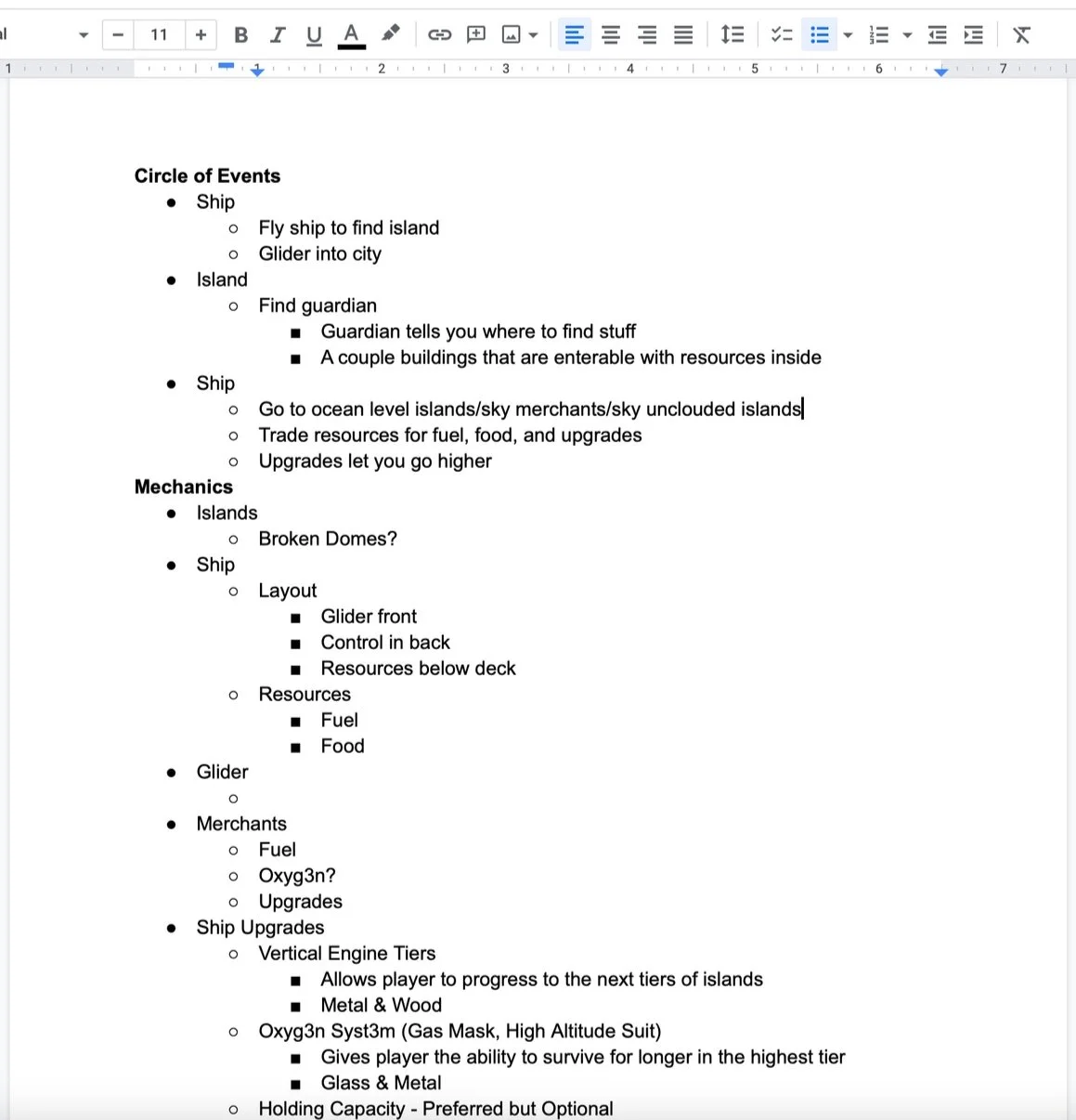Empyrean
A flight exploration game of searching for family and meaning amidst the clouds.
Empyrean (download) was the final game I created for the Oregon Game Project Challenge (OGPC), a state-wide, game development competition for middle and high schoolers to practice making games in a six-month long game jam. Entering with a different team each time, I served in various roles across my four years of high school.
My senior year, the theme for OGPC was “Hidden Worlds”. Our team designed a world hidden in the clouds to play on our mutual interest in flight. The title moved between a resource-collection title focused on upgrading your ship to a more exploration focused one, leaning into the process of finding the world hidden in the distance. Through multiple iterations on this idea, Empyrean was born. The game ended up winning both the Art and Assets Award (given to the game with the strongest visual style and polish) and the Peoples' Choice Award (given to the game voted most highly by the attending teams.)
Below are descriptions of my roles and contributions to the project as its composer and one of two game designers.







Designer
As one of the game’s designers, I worked to elaborate on our initial concept’s gameplay loop and eventually identify how to scope it down. When we started the project, our team had big ideas for how to make the exploration gameplay loop engaging to players. The other designer and I developed out a resource and merchant economy that would’ve had players collecting resources on smaller islands to upgrade their ship and glider en route to the game’s larger, plot important locations.
This idea quickly grew beyond our scope as the main flight system took more time to refine and polish. We also wanted our 3D modeler to feel proud of the main islands they were making, so we turned back to the drawing board to identify what needed to change in the design to support these new priorities.
We referred back to our main goals of creating a flight-based exploration game and trimmed away the extra features that weren’t necessary for that goal, namely the resource economy and intermediate islands. The resource economy would have provided a sense of player progression, but having the player discover new places in the world offered a progression metric directly tied to our core concept.
While they would have provided an extra layer of depth to the world environment, the intermediate islands were taking development time away from the main islands. This would have both reduced all the islands’ polish and the power of the progression-by-discovery gameplay loop, as less interesting islands would make finding them less rewarding. Since our 3D modeler had made progress on some of the intermediate island assets, we decided to repurpose them into alternate-dimension puzzle areas to give more depth to each of the main areas.
After this major rescoping of the design, I stepped back from design to focus on ensuring my musical deliverables were implemented on time. I continued to help work through design discussions, but I left most of the final decisions to our other designer.
As a team of four, all of us wore multiple hats to complete the project in the six month window. I served as the main composer for the project, as well as one of two game designers.
Composer
As the main composer, I wrote the game’s three song score from motif to production, getting feedback from the team on drafts during the process. My primary tool for the project was SunVox, a freeware audio tracker and sequencer. I worked on a layered motivic approach, starting with a core rhythmic or melodic idea and building an arrangement around it.
The Lullaby of the World (menu music) came the easiest, as the motif developed quickly and was easy to build an arrangement around. In contrast, Flight (overworld music) took multiple iterations to find a core identity to start from, eventually settling on the underlying rhythm that drives the player forward and gives the song a sense of adventure. Monument & Spirit World (alternate dimension theme) worked off a melody fragment and developed into a four-part choral arrangement set to synthesizers.
While these tracks were written early in my musical career and are a little bland in their production and harmonic choices, they served to engage players in the world enough to have them comment on it after playing the game.

